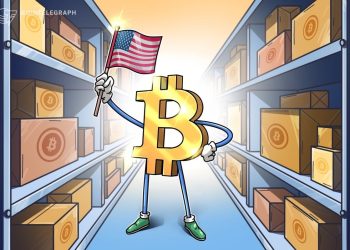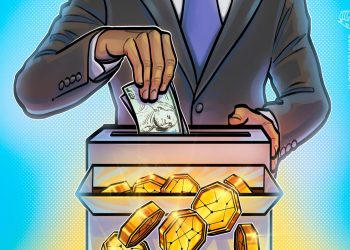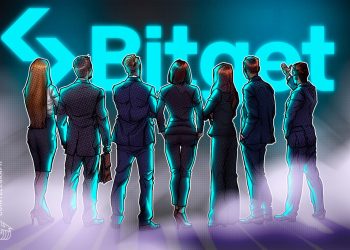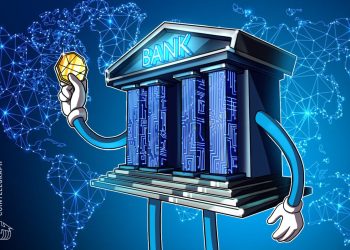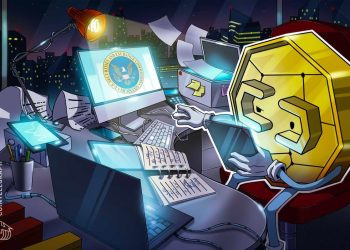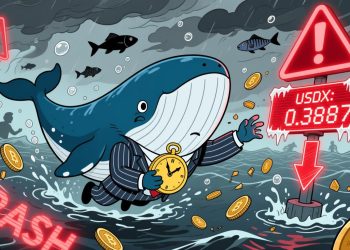Real estate-backed crypto project Tangible had an undisclosed business relationship with the CEO’s brother, a CoinDesk investigation found.
The brother’s company would buy properties at a discount and then flip them to Tangible with markups as high as 21%.
Such upselling has no justification, according to U.K. real estate professors who reviewed CoinDesk’s findings.
An investor known as ZilAYO started spotting “red flags” in crypto real estate project Tangible a week before calamity struck in October 2023.
Before that, ZilAYO had no complaints. He had invested $50,000 in Tangible’s flagship token, USDR, a stablecoin designed to trade one-to-one with U.S. dollars.
In addition to stability, USDR promised yield, and up to then it had delivered both. By ZilAYO’s estimate, “degenerate stablecoin farmers” like himself could milk returns of “20-80%” from USDR in part because of its backing: rent-generating real estate.
Tangible had spent investors’ money buying over 200 residential properties to backstop USDR. Tenants’ rents produced some of the yield. The project was growing fast; in early October 2023 Tangible pitched itself to a venture capital firm at a valuation of nearly $100 million.
Things were going so well that ZilAYO merely chuckled when he discovered something off-kilter: Tangible CEO Jagpal Singh’s brother, Joshvun Singh, ran BMS Luna Stacks, a company dealing in fine wine, gold bars and real estate – assets Tangible turned into tokens.
“I blindly trusted” Tangible would keep USDR stable, said ZilAYO.
Nevertheless, he sold days later, having learned from the Terra-Luna disaster that good things in stablecoins often don’t last long.
He got out just in time.
On Oct. 11, 2023, the equivalent of a bank run drained USDR’s liquid reserves, leaving only the illiquid real estate. Investors panicked; they couldn’t get their money out. USDR crashed from $1 to 50 cents.
That plunge is well-known. But there’s more to the story.
A CoinDesk investigation uncovered the Singh brothers’ lucrative, secret arrangement: Joshvun’s company bought properties and quickly flipped them to Jagpal’s companies – and thus to USDR investors – at markups sometimes greater than 20%.
CoinDesk reviewed hundreds of pages of documents, U.K. lending records, and corporate and land registries to uncover the hidden business arrangement.
U.K. land records suggest the upselling diverted at least £875,590 from USDR’s treasury to the brothers’ companies, but the true gap could be millions of pounds. Investors paid the price; any overpayment came out of money they had stashed in USDR’s treasury.
A Tangible representative said the markups were “previously disclosed” and covered “operational expenses.” The representative declined to say where this information was released, when or by whom.
In a statement, Tangible said it has been “working diligently” on making USDR investors whole. The company declined to answer a detailed list of questions, saying it’s “focused on the redemption process.”
Joshvun Singh did not respond to a request for comment by press time.
Proponents of “real world asset” (RWA) projects – which represent conventional investments as tokens on a blockchain — think crypto can pump liquidity into finance’s quieter corners. Tokens are easier to buy and sell than deeds to a house. Represent that deed with a token and – BADA BING – anyone in the world can trade it instantly.
The same month USDR collapsed, one firm estimated RWAs could turn into a $10 trillion business by 2030. But Wall Street firms move slowly, following every applicable financial regulation.
Crypto companies, by contrast, are freewheeling. Building on public blockchains, they set their own best practices.
Tangible was largely a British operation. But it tokenized real estate offshore, sidestepping U.K. regulations for REITs, or real estate investment trusts.
An employee once called USDR a “money REIT” on Discord. Investors told CoinDesk they liked USDR because they thought crypto was superior to stock market fare.
Blockchains “can give you a better idea of what you are actually buying into,” said a USDR investor who goes by 1ceo.
However, REITs in the U.K. are also transparent. They provide detailed financial statements to investors.
Meanwhile, Tangible withheld key legal details from investors who repeatedly asked for proof of ownership. Chief Marketing Officer Mike Slatkin once called the company’s legal opinion a “competitive advantage” that had been expensive to obtain.
On April 19, 2023, a Tangible special purpose vehicle (SPV) directed by Jagpal Singh bought a two-bedroom home in Halifax, England. Tangible redacted the seller’s name in records it provided to USDR investors, which showed the SPV paid £167,782.
To investors, the property looked like a good deal. Its purchase price was below a recent valuation commissioned by Tangible, which estimated the home could sell for £170,000 “in an arm’s-length transaction.”
It was a short arm.
The black boxes hid the full story: Joshvun Singh’s company BMS Luna Stacks had bought the house for £138,500 on April 19. The company immediately flipped the property to Jagpal’s SPV for £167,782, a 21% markup on the same day.
“Such a price increase on the same day, or even in any short period of time, doesn’t seem to be justified on any ground,” said Tommaso Gabrieli, an associate professor of real estate at University College London.
Real estate investment companies typically avoid buying marked-up houses from “related parties” like a company controlled by the CEO’s brother, said Nick Mansley, executive director of the University of Cambridge’s Real Estate Research Centre.
After reviewing Tangible’s undisclosed markups, Mansley concluded, “It would be hard to argue that investor interests have been put first – which they should be.”
Tangible obfuscated its markups behind redacted sales records, cherry-picked valuations and fees.
To peel back this onion, consider Westcott House, a 24-flat building in Hull, England.
In late June 2023, Tangible sold NFTs representing beneficial ownership of the 24 flats to USDR’s treasury for $2.32 million in crypto, according to blockchain data.
Partially redacted records explain the figure: On June 20, two dozen SPVs paid £1.56 million for the building’s 24 flats. Tangible priced this in dollars at $2.06 million. It added $292,042 for various, clearly disclosed fees. It billed the final tab to USDR’s treasury.
A valuation report published by Tangible said the 24 flats were worth £1.53 million as of June 20. To investors, the SPVs only appeared to have paid a 2.45% premium – seemingly reasonable.
But Tangible hid other things.
First, the valuer’s full report. Investors could only see his “special assumption valuation” on the freehold (the U.K. term for a building and its land) if Westcott House’s 24 leaseholds (long-term leases) were sold piecemeal – a process that could take months.
Second, the identity of the seller: BTS TNFT LTD, a company directed by Jagpal, is redacted from Tangible’ records. BTS TNFT owned the Westcott House freehold even after flipping its 24 leaseholds to Tangible SPVs.
(Jagpal essentially sold those leaseholds to himself; the U.K.’s business registry shows he’s the sole shareholder of BTS TNFT, itself the sole shareholder of the Tangible SPVs.)
Third, while it’s not clear when BTS bought Westcott House’s freehold, all indications are that it paid £1.425 million shortly before flipping the leaseholds to Tangible SPVs for £1.56 million. As of November, BTS valued the freehold at £1.425 million, according to the U.K. registry, which Gabrieli said reflected the price it had paid.
The 10% premium “seems another unjustified markup over a short period of time,” said Gabrieli. “Moreover a freehold should have a higher valuation than a leasehold.”
A building and its land should be worth more than the sum of its flats.
CoinDesk’s analysis of records from the U.K.’s land registry shows markups from Jagpal’s and Joshvun’s companies added at least £875,590 to the price of Tangible’s properties.
While the registry has incomplete information, granular data released by Tangible in 2024 – after it had stopped buying properties and long after USDR collapsed in October 2023 – indicates markups may have cost £2.5 million.
That figure is the sum of the spreads between each property’s “agreed price” (paid by BTS and BMS) and its “price” (paid by Tangible SPVs). CoinDesk gathered these data from 207 NFTs that represent U.K. properties owned by USDR’s treasury.
“Tangible employs a robust underwriting process to ensure that property valuations and final deals are conducted with the highest standards of accuracy and integrity,” the company now says on a disclosure page that did not exist before mid-2024.
Despite its redactions, Tangible has long stated elsewhere that it sourced properties from BTS TNFT. That disclosure makes no mention of a markup or of Joshvun’s company.
One year after USDR’s collapse, investors are still waiting for their money back. Tangible, now known as re.al, must first liquidate nearly 200 U.K. properties worth nearly £27 million.
The 24 flats of Westcott House underscore how difficult recouping costs may be. Jagpal Singh’s company sold the leaseholds for above-market prices the same day of the valuation – a feat, considering that report predicted sales could take up to two years.
How fast, and for how much, can Tangible liquidate its properties when it’s not selling, in essence, to itself?
CoinDesk spoke to seven longtime investors in USDR. All but one said they would not have touched the token had they known Tangible was buying marked-up properties from related entities.
After-the-fact disclosures don’t cut it, said a DeFi builder who invested $8,000 into USDR in early 2023 and who asked to remain anonymous to maintain professional relationships. Before investing, he performed due diligence on USDR’s real estate backing and even asked for proof Tangible owned what it claimed.
“My assumption as a citizen of Web3” was that Tangible would act as transparently as the blockchain USDR is built on, said the investor. “If there are fees, you’re gonna take your fees and be transparent about it.”
Others weren’t as prudent. An investor who goes by Donk3ynuts said he didn’t review any documents before tossing “thousands of dollars” into USDR.
“I don’t read that sh*t. I just ape,” Donk3ynuts said.
Pingu1 has been a paid moderator of Tangible’s Discord since March and an investor in USDR even longer. In an interview, Pingu1 said he still keeps the faith.
Tangible employees had “ample time to just disappear in the wild like many other teams did,” he said.
Still, Pingu1 said he has “no clue how the company operates.” He wants clarity on these allegations just like any other investor with tens of thousands of dollars on the line.
“I have no idea how [a] REIT operates, so all I can do is ‘trust’ the team, read the docs and white papers, verify the contracts and hope for the best,” Pingu1 said.
Donk3ynuts isn’t ready to embrace financial regulations, even after getting burned by Tangible.
“You will have good actors, but also bad actors,” Donk3ynuts said, adding, “RWA tokenization is new, so this is part of the growing of the industry.”















